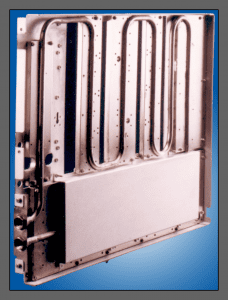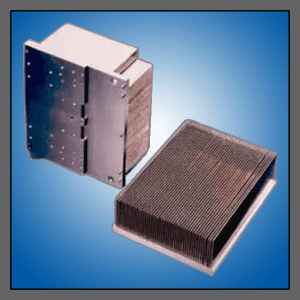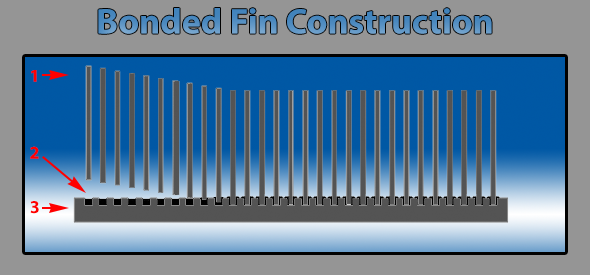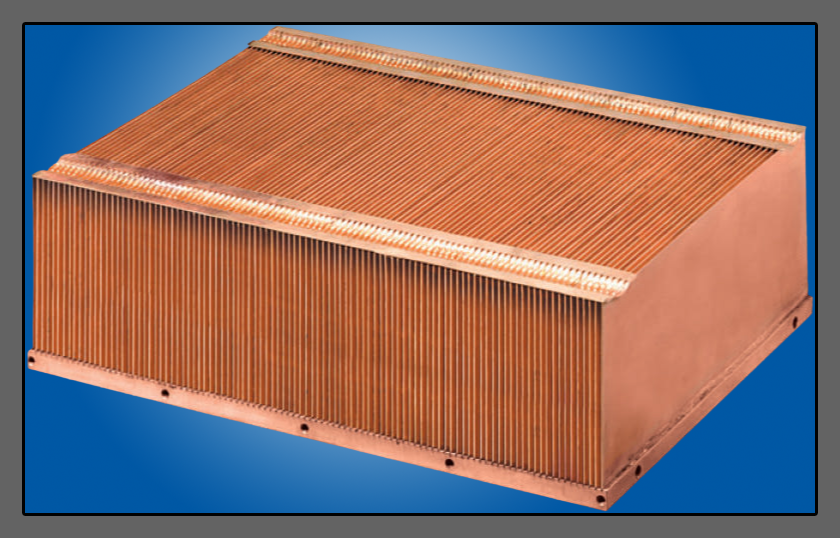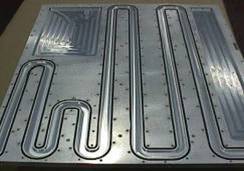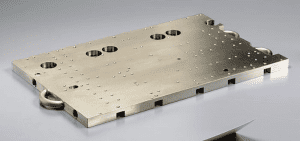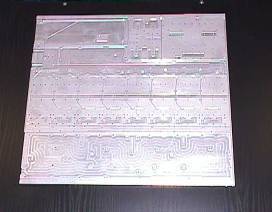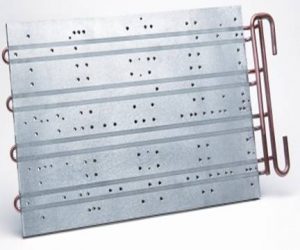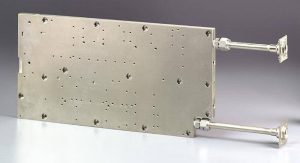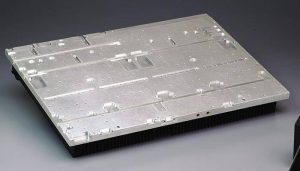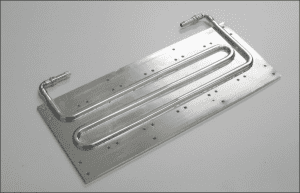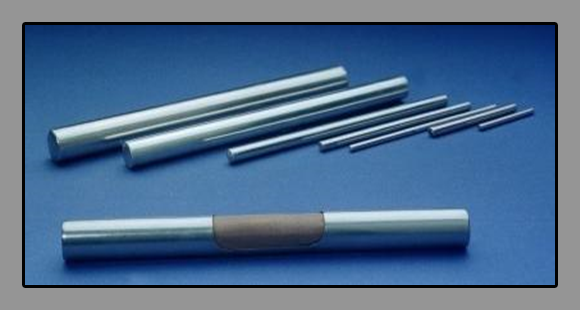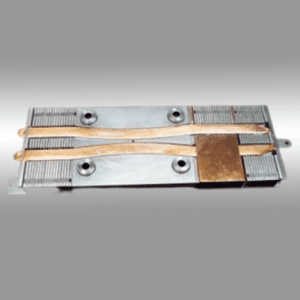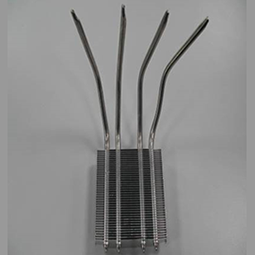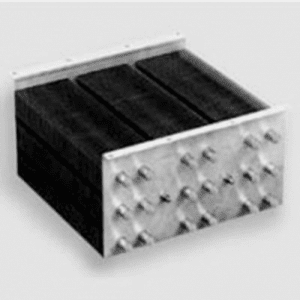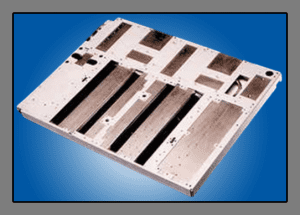About our Heat Sinks
We specialize in Heat Sinks for medium to high-power applications. We understand that designers are constantly being asked to use more power in a smaller footprint at no additional cost. Our heat sink designs are custom engineered to your specific needs. Our have experienced thermal and mechanical engineers work with you to bring your designs from concept to production. We use the latest thermal simulation software in conjunction with highly sensitive thermal test equipment to provide accurate data speeding your product to market.
In general, a heat sink is a thermal management component designed to absorb and disperse heat away from a heat source (device), using a high thermal conductivity material, such as copper or aluminum, and increasing the device's working surface area. Heat then moves through natural conduction from a high temperature zone to a low-temperature zone, forming a temperature gradient across the heat sink. This results in a thermal profile, which is hotter towards the source and cooler towards the heat sinks’ edges.
For air-cooled heat sinks, increased surface area is created with fins, which can be extruded out of a plate, or bonded to a plate to produce a larger area for thermal diffusion and convection to occur. The plate’s thermal resistance to the heat producing (device) can be further reduced by using TIM (thermal interface material) or Thermal Grease. A heat sink used without a fan is called a passive heat sink, and when combined with a fan, is called an active heat sink.
In the case of liquid cooled heatsinks, a fluid moves across the surface of the hot zone and through thermal diffusion and convection, move heat into a lower temperature environment.
Bonded Fin Heat Sinks
Bonded fin heat sinks allow a smaller package size or lower thermal resistance than conventional aluminum extrusions in forced air applications. We offer signal fin, and corrugated fin options for our bonded fin heat sinks. Some versions of our corrugated fin stock have an off set providing greater turbulence resulting in larger heat transfer. It is normally possible to dissipate two to three times more heat than conventional aluminum extrusions with our bonded fin designs.
In applications where space and high thermal density is a problem, copper bonded versions are available. Copper has a thermal conductivity twice that of aluminum. The fin density and fin height on both can be used in countless combinations. We can provide you with the best possible value, based on your unique application.
In the case of either aluminum bonded fins or hybrid design using a combination of fins or a base made from copper and aluminum, the use of a thermally loaded epoxy is required. For aluminum to aluminum bonded fin assemblies, this offers a cost effect alternative to brazing. In the case of hybrid designs, the epoxy is required to create a barrier between two dissimilar metals. Copper and aluminum have a large difference in electro-chemical potentials; when in contact with one another in the presence of an electrolyte (moisture in the air or condensation), galvanic action will occur, resulting in the deterioration of the metal with the lower galvanic number.
- Aluminum or Copper Fins
- Thermally loaded Epoxy
- Aluminum or Copper Baseplate with extruded or machined channels
Soldered fin construction can be used for all copper designs.
Special processed need to used in order to carefully maintain the temperature of the copper below the annealing point so the material does not become gummy and un-usable.
Extruded Heat sinks
Extrusions used in a forced air system are the most common heat sinking method. When compared to a natural convection system substantially better performance can be realized. It is important understand too that most "as purchased" extrusion heat sinks are not sufficiently flat and require machining. Our heat sinks typically come with a 0.001 per inch flatness and surface finish of 64 micro inches over the area required.
We are constantly working to improve our fin aspect ratios and fin densities. We continually produce heat sink extrusions that other manufacturers said "were not possible". For the finest in extruded air-cooled heat sinks let us assist you with your extrusion design. We will provide a cost-effective solution for your cooling needs.
Also available are high fin density extrusions. These extrusions can be made with aspect ratios of up to 20:1. In many cases this these can be very cost-effective alternatives to a bonded fin construction. Since no thermal epoxy is used there is no thermal barrier just pure metal to transfer the heat from the source to the fin ends. The down side of high fin density extrusion is tooling cost and lead-time.
Liquid Cooled Heat Sinks
Liquid cooled heat sinks provide the highest thermal performance per unit volume and when optimally designed can exhibit a very low thermal resistance. Liquid heat sinks can be constructed by soldering copper tubing on to a flat copper plate or by drilling holes in a metal block through which water may pass.
With greater complexity and greater thermal performance an elaborate serpentine water channel may be milled in a copper or aluminum block that later is sealed off. While liquid cooling may be considered undesirable and /or unsatisfactory for many applications it may be the only viable approach in specific situations.
Liquid cooling, in addition to being compact, keeps noise to a minimum and can increase semiconductor life due to reduced temperatures. We can also provide chiller units for complete cooling systems. We commonly use several cold plate construction methods: Sizes of these plates range from a few centimeters to slightly more than 2 meters.
COLD PLATE CONSTRUCTION METHODS
Heat Pipes
For maximum power heat transfer we offer Powder Type heat pipes. These come in standard lengths from 150 to 300 mm. Tube diameters range from 2 to 8 mm with maximum power capacity of 45 watts.
Tubes can be flattened in order to stack several heat pipe into a very tight space in order to increase heat carrying capacity of an assembly. Heat pipes are typically supplies as a finished assembly integrated with a plate and fins (corrugated, or zipper fins are most common)
- The best for heat transfer.
- Better quality reliability.
- Workable for any operation direction
- Easy for bending and flatten.
- Higher cost.
- Difficult to produce.
- Flattening limitation (2mm)
HEAT PIPE IMPLEMENTATION EXAMPLES

The above drawing depicts basic heat pipe construction and theory of operation.
In general a heat pipe consists of a sealed usually aluminum or copper tube, a wicking structure and a few cc’s of fluid under pressure. When heat is applied to a point along the length of the heat pipe the liquid at that point will boil into a vapor. By boiling, the liquid extracts heat through vaporization (turning into a gas). As a gas, this vapor travels to the cold side of the heat pipe and condenses back into a fluid. This fluid then moves back through the wicking structure and the process is repeated.
Value Added Assemblies
Typically it is advantageous to design a heat sink assembly that can reduce waste created by additional handling through secondary operations at your facility. We will work with you to design an assembly which can drop right into your product, reducing handling cost and potential damage.
Items integrated into our heat sink assemblies include, Shielding such as EMI/RFI barrier walls, Hardware like standoffs and studs for mounting, Chassis and interface sheet metal. Also, we can provide you with an extensive variety of finishes which include plating, painting, and silk screening. We want to incorporate as much into the assemblies as possible so that when you take our assembly to the factory floor you can immediately interface it to the product for fast shipment to your customer.
We will work with you on mechanical components in order to reduce your assembly time and inventory cost.
